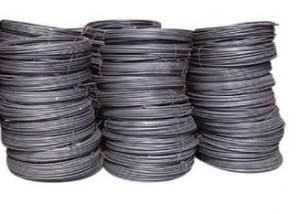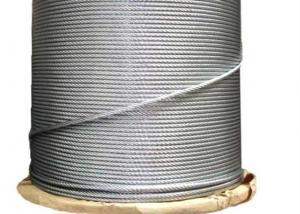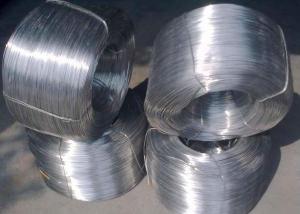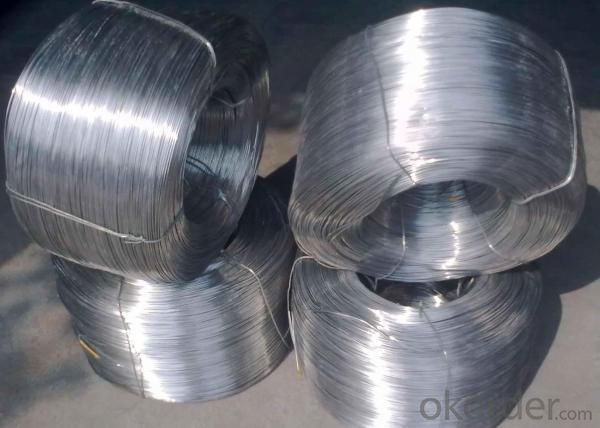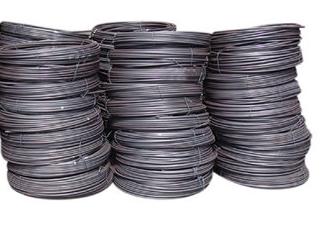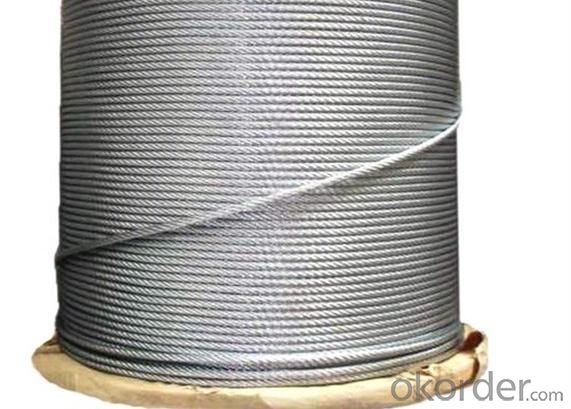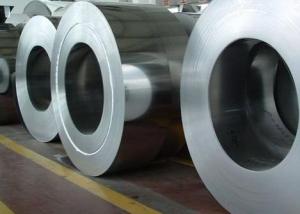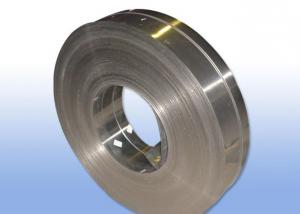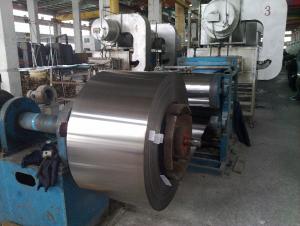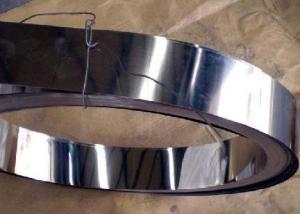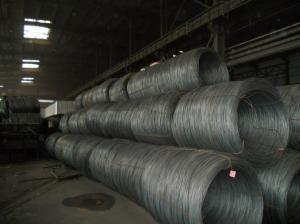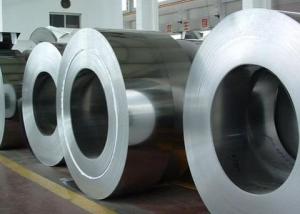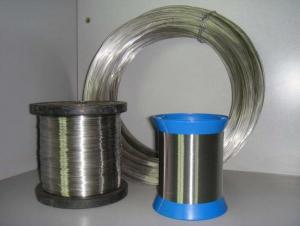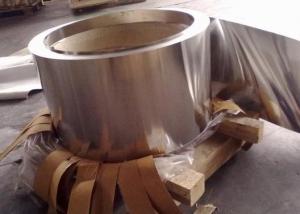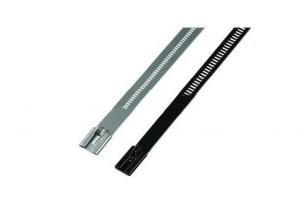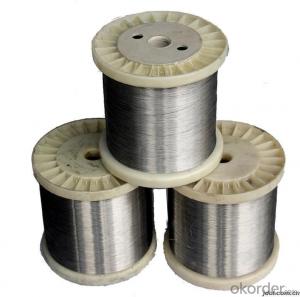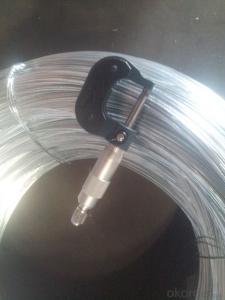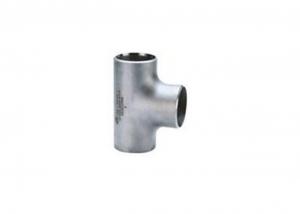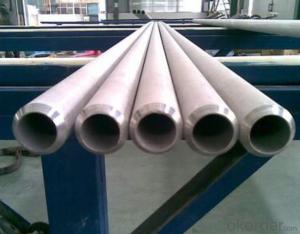Prime Stainless Steel Wire
- Loading Port:
- China Main Port
- Payment Terms:
- TT or LC
- Min Order Qty:
- 1 Ton m.t.
- Supply Capability:
- 2000 Tons Per Month m.t./month
OKorder Service Pledge
OKorder Financial Service
You Might Also Like
304 Stainless Steel Wire
1.Grade: SS 200,300,400 series
2.Dia: 0.1mm-100mm
3.Length:500m-2000m/Reel
4.Surface: Bright
5.Certificate: Fortune 500, SGS, ISO 9001:2008
6.Test: Salt Spray over200 hours
7.MOQ:500kg
8.Delivery: Within 20 days
9.Packing: Reel, wooden box or according to your requirement
10.Payment terms: China Main Port or CIF ANY PORT
11. Application: Tie wire, pins, lashing, forming wire, filters, gaskets, elevators, safety wire, shaped and flat wire, conveyors, jewelry, springs, brush welding, electrical, wire line, craft and many more applications.
|
Main Grades |
C % |
Si % |
S % |
P % |
Mn % |
Cr % |
Ni % |
Mo % |
Cu % |
|
S30400 |
<0.08 |
<0.75 |
<0.015 |
<0.045 |
<2 |
18.05-19 |
8.01--8.25 |
<0.6 | |
|
304H |
0.04-0.1 |
<0.75 |
<0.015 |
<0.045 |
<2 |
18.05-19 |
8.01--8.25 |
<0.5 | |
|
304Hc1 |
0.03-0.05 |
<0.75 |
<0.015 |
<0.045 |
<2 |
18.05-19 |
8.01-8.25 |
1.2-1.6 | |
|
304Hc |
0.03-0.05 |
<0.75 |
<0.015 |
<0.045 |
<2 |
18.05-19 |
8.01--8.25 |
2-3 | |
|
304Hc3 |
0.03-0.05 |
<0.75 |
<0.015 |
<0.045 |
<2 |
18.05-19 |
8.01--8.25 |
3-3.5 | |
|
304ES |
<0.08 |
<0.75 |
<0.015 |
<0.045 |
2-3 |
16.05-17 |
6.01-6.3 |
1.5-3 | |
|
304M2 |
0.05-0.08 |
<0.75 |
<0.015 |
<0.045 |
2-3 |
18-18.5 |
7-8.1 |
<0.6 | |
|
304M3 |
0.05-0.08 |
<0.75 |
<0.015 |
<0.045 |
2-3 |
18-18.5 |
8.01-8.25 |
<0.6 | |
|
304L |
<0.035 |
<0.75 |
<0.015 |
<0.045 |
<2 |
18.05-19 |
8.01--8.25 |
<0.6 | |
|
321 |
0.04-0.08 |
<0.75 |
<0.015 |
<0.045 |
<2 |
17-18 |
8.01--8.25 |
||
|
316L |
<0.035 |
<0.75 |
<0.015 |
<0.045 |
<2 |
16.05-17 |
10.01--10.35 |
2.01-2.2 |
<1 |
|
316 |
0.04-0.08 |
<0.75 |
<0.015 |
<0.045 |
<2 |
16.05-17 |
10.01--10.35 |
2.01-2.2 |
<1 |
|
316LCu |
<0.035 |
<0.75 |
<0.05 |
<0.045 |
<2 |
16-17 |
10-10.5 |
2-2.25 |
|
|
ER316L |
<0.04 |
0.65 |
<0.03 |
<0.04 |
1.0-2.5 |
18-20 |
11.1-12 |
||
|
201CU |
<0.08 |
<0.75 |
<0.015 |
<0.045 |
8-9.5 |
13.05-14 |
4.01-4.25 |
2-3 | |
|
D667 |
<0.08 |
<0.75 |
<0.015 |
<0.045 |
13-14 |
13-14 |
0.7-1.5 |
1.5-3 | |
|
D665B |
<0.08 |
<0.75 |
<0.015 |
<0.045 |
14-16 |
10.05-11 |
<1.2 |
0.5--1.5 | |
|
202B |
0.1-0.15 |
<0.75 |
<0.015 |
<0.045 |
9-10 |
17.05-18 |
4.5-5 |
||
|
D669 |
0.08-1.0 |
<0.75 |
<0.015 |
<0.045 |
14.5-16 |
11-12 |
<1.2 |
0.5-1.5 | |
|
200CU |
<0.08 |
<0.75 |
<0.015 |
<0.045 |
11-12 |
13-14 |
1-2 |
1.5-2.5 |

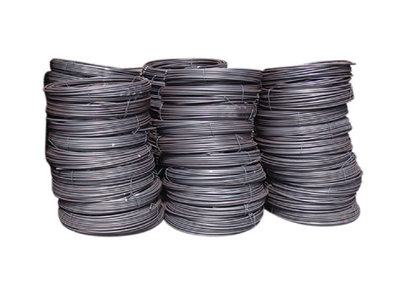
- Q: How is stainless steel wire mesh woven?
- Stainless steel wire mesh is woven using a process called plain weave or twill weave. In the plain weave method, the wires are woven in a crisscross pattern, with each wire passing over and under the adjacent wires in an alternating manner. This creates a simple and tight mesh structure. On the other hand, in the twill weave method, the wires are interlaced in a diagonal pattern, which gives the mesh a more robust and durable construction. This weaving technique involves each wire passing over two and under two adjacent wires, creating a distinctive diagonal pattern. Both plain weave and twill weave methods require precision and attention to detail to ensure a consistent and uniform mesh structure. The wires used in stainless steel wire mesh are usually thin and strong, allowing for a tightly woven and reliable mesh that is resistant to corrosion and wear. Overall, the process of weaving stainless steel wire mesh involves interlacing thin stainless steel wires in either a crisscross or diagonal pattern, resulting in a versatile and durable mesh that finds applications in various industries such as filtration, screening, and protection.
- Q: Can stainless steel wire be coated or plated with other materials?
- Yes, stainless steel wire can be coated or plated with other materials. Coating or plating stainless steel wire with other materials is a common practice in various industries, including automotive, aerospace, and electronics. The purpose of coating or plating is often to enhance the wire's properties, such as corrosion resistance, conductivity, or appearance. Some of the commonly used materials for coating or plating stainless steel wire include zinc, nickel, chrome, copper, and various alloys. The coating or plating process typically involves applying a thin layer of the desired material onto the stainless steel wire's surface through electroplating, electroless plating, or other coating techniques. This allows for the creation of a protective layer or the addition of specific properties without compromising the inherent strength and durability of the stainless steel wire.
- Q: What are the different types of stainless steel wire crimping techniques?
- There are several types of stainless steel wire crimping techniques, including hand crimping, manual crimping tools, pneumatic crimping tools, and hydraulic crimping tools.
- Q: The manual work with stainless steel wire to die of
- If the manual method is not good, then you can clamp the stainless steel wire on the lathe, with a lathe to cover the wire, it should be relatively good set of silk.
- Q: What are the different types of stainless steel wire braids?
- There are several different types of stainless steel wire braids that are commonly used in various industries. These include: 1. Standard braids: These are the most common type of stainless steel wire braids and are typically made from AISI 304 or AISI 316 stainless steel. They offer good flexibility and resistance to corrosion, making them suitable for a wide range of applications. 2. High-tensile braids: These braids are made from stainless steel alloys with higher tensile strength, such as AISI 302 or AISI 321. They are specifically designed for applications that require extra strength and durability, such as heavy machinery or high-pressure systems. 3. Ultra-flexible braids: As the name suggests, these braids are extremely flexible and are often used in applications where flexibility and maneuverability are crucial, such as in medical devices or robotics. They are typically made from AISI 316L stainless steel, which offers excellent corrosion resistance and biocompatibility. 4. Coated braids: Some stainless steel wire braids are coated with a layer of polymer or silicone material to provide additional protection against abrasion or chemicals. These coatings can also enhance the appearance of the braids and make them more comfortable to handle. 5. Flat braids: Unlike traditional round braids, flat braids have a flattened profile. They are commonly used in applications that require a low profile or when space is limited. Flat braids can be made from various stainless steel alloys, depending on the specific requirements of the application. Overall, the different types of stainless steel wire braids offer a wide range of properties and characteristics to meet the diverse needs of different industries. Selecting the right type of braid depends on factors such as the application requirements, environment, and desired performance characteristics.
- Q: What are the different types of stainless steel wire rope constructions?
- There exist various stainless steel wire rope constructions, each possessing its distinct characteristics and uses. Some commonly encountered types are as follows: 1. 1x19 Construction: Comprising 19 wires twisted together into a single strand, with one central wire enveloped by six strands, each consisting of two wires. It offers exceptional strength and limited flexibility, making it perfect for applications necessitating high tensile strength, for instance, standing rigging on sailboats. 2. 7x7 Construction: This construction incorporates seven strands, with each strand composed of seven wires twisted together. It provides satisfactory flexibility and moderate strength, rendering it suitable for applications such as cable railing, garage door cables, and winch lines. 3. 7x19 Construction: Resembling the 7x7 construction, this type of wire rope includes seven strands, each consisting of 19 individual wires. It offers improved flexibility and heightened strength in comparison to the 7x7 construction, thus making it suitable for a wide range of applications, including lifting slings, guy wires, and zip lines. 4. 6x19 Construction: This construction consists of six strands, with each strand comprising 19 wires twisted together. It offers good flexibility and high strength, making it appropriate for applications like crane hoist ropes, winch lines, and overhead lifting. 5. 6x36 Construction: This construction is characterized by six strands, with each strand consisting of 36 individual wires twisted together. It provides excellent flexibility and high breaking strength, rendering it ideal for applications that necessitate both flexibility and strength, for example, elevator ropes, wire rope slings, and tow lines. 6. 1x7 Construction: This construction is composed of a single strand twisted together from seven wires. It offers high tensile strength and limited flexibility, making it suitable for applications that require maximum strength, such as control cables and wire rope fencing. These examples showcase only a fraction of the stainless steel wire rope constructions that are available. The choice of construction relies on the specific requirements of the application, encompassing strength, flexibility, and durability.
- Q: What are the different types of stainless steel wire diameters?
- There are several different types of stainless steel wire diameters available, each designed for specific applications and requirements. The most common stainless steel wire diameters range from 0.012 inches to 0.125 inches (0.3mm to 3.175mm). These diameters are commonly used in various industries such as aerospace, automotive, construction, and medical. For finer applications, smaller diameter stainless steel wires are used, typically ranging from 0.012 inches to 0.030 inches (0.3mm to 0.76mm). These thin wires are often used in applications like jewelry making, weaving, and electronics. Medium-sized stainless steel wires have diameters ranging from 0.031 inches to 0.062 inches (0.79mm to 1.57mm). These wires are commonly used in applications such as springs, fasteners, and mesh screens. Larger diameter stainless steel wires, ranging from 0.063 inches to 0.125 inches (1.6mm to 3.175mm), are used for heavier-duty applications. These wires are commonly used in applications such as structural supports, reinforcement, and industrial mesh. It is important to note that these are just some of the standard stainless steel wire diameters available, and custom sizes can be manufactured to meet specific requirements. The choice of wire diameter depends on factors such as strength, flexibility, corrosion resistance, and the intended application.
- Q: Can stainless steel wire be used outdoors?
- Yes, stainless steel wire can be used outdoors. Stainless steel is highly resistant to corrosion, making it suitable for various outdoor applications. It can withstand exposure to moisture, sunlight, and extreme temperature conditions without rusting or deteriorating. Stainless steel wire is commonly used in outdoor structures like fences, railings, and garden trellises. It is also used for outdoor electrical wiring, marine applications, and outdoor furniture. The durability and longevity of stainless steel wire make it an excellent choice for outdoor use.
- Q: Can stainless steel wire be used for wire rope slings assemblies?
- Yes, stainless steel wire can be used for wire rope sling assemblies. Stainless steel wire offers excellent corrosion resistance, making it suitable for applications where the sling may be exposed to harsh environments or chemicals. Additionally, stainless steel wire has high tensile strength and durability, allowing it to withstand heavy loads and repeated use. However, it is important to ensure that the stainless steel wire used in the wire rope sling assemblies meets the required specifications and standards for the intended application.
- Q: What is the difference between stainless steel wire and cold wire drawing
- Stainless steel cold drawing is a type of stainless steel processing.
Send your message to us
Prime Stainless Steel Wire
- Loading Port:
- China Main Port
- Payment Terms:
- TT or LC
- Min Order Qty:
- 1 Ton m.t.
- Supply Capability:
- 2000 Tons Per Month m.t./month
OKorder Service Pledge
OKorder Financial Service
Similar products
Hot products
Hot Searches
Related keywords
